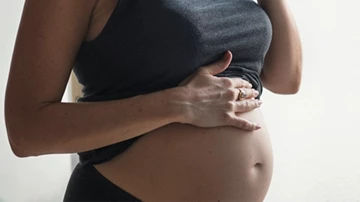During pregnancy (particularly at your hospital appointments) or while you are in labour, you are likely to hear alot of new words and terms that you aren’t quite sure what they mean – don’t worry we are all in the same boat! Here we will explain some common terms and phrases so you feel a little more in the know.
Pregnancy Terms Explained

Amniotic Fluid: This is the water that surrounds the baby in the uterus. There is almost 1 litre around your baby at their time of birth.
Antenatal: The time before the birth (pregnancy).
APH: You may never hear this term but in case you do it stands for antepartum hemorrhage and means bleeding before the birth.
Breech: Breech presentation. This is when your baby is lying with their bum or feet down in the uterus.
BP: Blood Pressure
Cephalic: This means your baby is head down in the uterus.
EDD: Expected date of delivery – the expected date your baby is to make an appearance.
Engaged: This means that the widest part of your baby’s head has moved down into the pelvis, getting ready for birth.
Episiotomy: A cut that is made in the mother’s perineum (the area between the vagina and anus) to prevent you tearing badly. Only done if absolutely necessary.
Fetus: This is the Medical name for your baby before it’s born.
Fetal heart (FH): This is your baby’s heart rate. You’ll see it being written in your chart as your pregnancy progresses.
Fetal Movement (FM): You will see this being documented at every antenatal visit from 25 weeks. FMF or FM >10 in 12hrs will be written.
Fundus: This is the top of the uterus. The ‘fundal’ height helps assess the growth of the baby and how many weeks pregnant you are. The midwife or Doctor palpates the fundus to assess if baby is growing as they expect. You will see F=D on your chart or Fundus = Dates.
Haemoglobin (HB): This is the medical term for your Iron level. Ideally it should to be above 10.5 gdl in pregnancy.
Hypertension: This means you’re experiencing high blood pressure.
Hypotension: This means you’re experiencing low blood pressure.
LMP: Last menstrual period. The first day of your last period is used to work out how many weeks pregnant you are.
Multigravida: A woman who has been pregnant before.
NAD: Nothing abnormal detected. The doctor or midwife may write this on your notes when they find no problems.
Occipito Anterior: When the back of your baby’s head is against the front of your pelvis. You may see LOA or ROA on your notes which means left (or right) occipito anterior and described whether the baby’s head is toward the left or the right. LOA is usually the best position for a shorter labour and an easier birth. You will see these terms on your labour notes.
Occipito Posterior: As above but the back of your baby’s head is against your back. It is also known as star gazing, your baby will be born looking up instead of down.
Oedema: This means swelling.
Palpation: When the Midwife or Doctor feels which way the baby is lying by moving their hands across your abdomen.
Perineum: The area of skin between your vagina and anus.
PIH: This means Pregnancy-Induced Hypertension, which means that your blood pressure is high.
Placenta Praevia: This means the placenta is low down in your uterus. Sometimes it covers the cervix and blocks the baby’s exit, which would mean you need a caesarean section.
Postnatal: After your baby is born.
Preterm: When the baby is born before 37 weeks of pregnancy.
Primigravida: A woman pregnant for the first time.
Quickening: Your baby’s first movements.
Rhesus (RH): The rhesus blood group system is a way of categorising your blood type. You will be either Positive or Negative.
Rooming in: Most maternity units practice a policy of rooming in. It is now recommended that babies stay with their mums 24 hours a day. This helps with feeding and bonding.
Skin-to-skin: Skin-to-skin contact with your baby after birth (your baby is dried and put straight onto your chest).
Syntocinon: This is a manmade version of the hormone we produce ourselves for labour Oxytocin. It is routinely given in the hospital for the third stage of labour. Or it can also be used to induce you into labour.
Term: 40 Weeks
VE: Vaginal examination.
Ventouse: Vacuum delivery.(Also called KIWI delivery!) Sometimes used to help deliver the baby’s head.
VERTEX -VX: ‘The Vertex is visible’ words you want to hear! It means the top of your baby’s head is visible.


